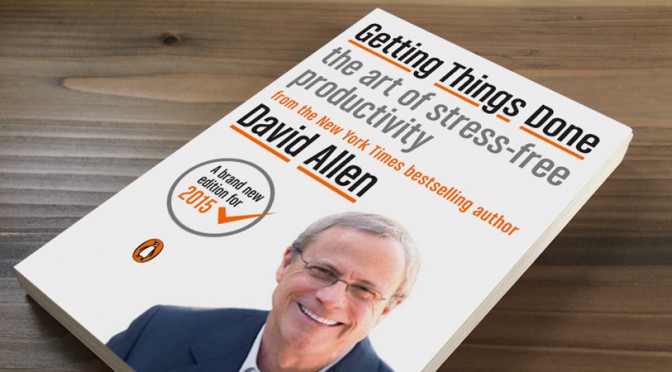
In Getting Things Done, David Allen has woven together a thoughtful, relevant, and action-oriented plan to meet maximum productivity while eliminating unnecessary stress and toil. Allen’s 2001 personal improvement book brings decades of proven leadership consultation experience to the pages and its concepts stay relevant 14 years after publication, almost appearing timeless.
Allen begins by acknowledging that the demands of our day-to-day life has exceeded our brain’s capacity to manage them effectively, and while our brains are more stimulated than ever before, we also have more tools at our disposal to help manage these demands. Allen posits that instead of using our brain to constantly triage the decisions of our life, we use simple systems to allow our mind to be free of unnecessary worry and angst. In this place, he argues, our mind is best suited to make decisions that align with our values.
Through the implementation of basic systems of workflow, Allen explains that mastering workflow prevents a person from being at the mercy of their circumstances. He states that dealing with the work involves five steps: 1) collecting things that command our attention; 2) processing what they mean and what to do about them; 3) organizing the results; 4) reviewing them for options for what we choose; and 5) doing. These steps rely heavily on writing things down that are on our mind so we can organize them instead of letting them fester unnecessarily.
For each piece of work, he asks whether the work or idea involves an action step, if it does, he recommends doing it immediately (if it takes less than 2 minutes to complete), scheduling a time on a calendar to do it, delegating it, or deferring it to a time as soon as possible, if it is not actionable, it either goes into a “someday/maybe” folder, or gets thrown away.
The beauty of Allen’s work is in its simplicity. The systems he recommends that people employ are not dependent on technology – people could have implemented these into their lives at almost any time in history (and the successful people probably did). The physical requirements of these systems simply involve a bin for items that need to be decided on and a file folder for ideas to be saved for later.
Making these behaviors a habit is probably the most difficult part of Allen’s recommendations. For those that have relied on their brain to contain all important thoughts and actions in their life, it can be difficult to relinquish some of those tasks to a system. Allen also informs readers that clarifying one’s values is a critical part of this change process, and it doesn’t necessarily make life easier. Once you have clarified what is important to you in your life, it may actually make decisions more challenging because they will be made with more purpose, conviction, and thoughtfulness. However, his system certainly promotes a more mindful way of living. In this world of increased complexity and opportunities for distraction, I imagine we could all use a little more of that.